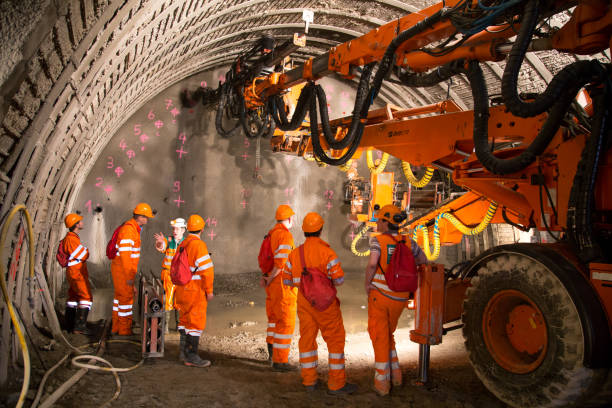South Africa Mining Right Reform

South Africa Mining Right Reform: Balancing Investment, Equity, and Sustainability
The reform of mining rights in South Africa is a critical issue shaping the future of the country’s mining industry. As one of the world’s largest producers of gold, platinum group metals (PGMs), diamonds, and coal, South Africa’s mining sector plays a pivotal role in its economy. However, outdated policies, regulatory uncertainty, and calls for greater equity have driven the need for reform. The government’s efforts to revise mining rights aim to address historical inequalities, attract investment, and promote sustainable development. In this blog post, we will explore the drivers behind mining right reforms, their implications, and the challenges and opportunities they present.

Understanding Mining Rights in South Africa
Mining rights are legal permissions granted by the government that allow companies to explore, extract, and process minerals within specified areas. Under the Mineral and Petroleum Resources Development Act (MPRDA) of 2002, all mineral resources in South Africa are owned by the state, and mining companies must apply for rights to access them. These rights come with obligations to ensure equitable benefit-sharing, environmental protection, and community engagement.

Drivers of Mining Right Reform
1. Addressing Historical Inequities
South Africa’s mining industry has long been criticized for perpetuating economic disparities rooted in apartheid-era policies. Reform aims to empower historically disadvantaged South Africans (HDSAs) by increasing their participation in the sector through ownership, employment, and skills development programs.
2. Ensuring Equitable Benefit-Sharing
Reforms seek to ensure that local communities and the state receive fair compensation from mining activities. This includes higher royalties, taxes, and requirements for companies to invest in community development projects.
3. Attracting Foreign Investment
Regulatory uncertainty has deterred foreign investors in recent years. Simplifying and stabilizing mining rights processes is seen as essential to restoring confidence and attracting much-needed capital.

4. Promoting Environmental Sustainability
Growing concerns about climate change and environmental degradation have prompted reforms to enforce stricter environmental standards. Companies must now demonstrate sustainable practices when applying for mining rights.
5. Formalizing Artisanal and Small-Scale Mining (ASM)
Artisanal miners often operate informally, leading to unsafe conditions and conflicts with industrial miners. Reforms aim to formalize ASM, ensuring safer working conditions and integrating these miners into the formal economy.
Key Changes in Mining Right Reforms
1. Increased State Participation
The government has proposed increasing state ownership stakes in new mining projects. While the exact percentage varies, this move aims to ensure that the state benefits directly from resource extraction.

2. Local Content Requirements
Companies are now required to prioritize local procurement, employment, and skills development. For example, mining equipment and services must increasingly be sourced from South African businesses.
3. Stricter Environmental Regulations
New reforms emphasize the need for comprehensive environmental impact assessments (EIAs) and land rehabilitation plans. Companies must also adopt measures to reduce carbon emissions and water usage.
4. Community Consultation and Benefit-Sharing
Reforms mandate meaningful consultation with local communities before granting mining rights. Companies must also allocate a portion of profits to community development funds or infrastructure projects.
5. Streamlined Licensing Processes
To reduce delays and improve transparency, the government is digitizing mining rights applications and introducing online platforms for tracking progress.
Implications of Mining Right Reforms
Positive Outcomes
- Economic Empowerment : Increased participation of HDSAs and local communities can reduce inequality and create jobs.
- Environmental Protection : Stricter regulations encourage sustainable practices, aligning the industry with global green standards.
- Investor Confidence : Clearer and more stable policies could attract foreign direct investment (FDI) and boost production.
Challenges
- Regulatory Uncertainty : Frequent changes to mining laws may create confusion and deter long-term investments.
- Cost Burdens : Higher royalties and environmental compliance costs could strain mining companies, particularly smaller operators.
- Community Conflicts : Ensuring equitable benefit-sharing and resolving disputes between companies and communities remains a significant challenge.
Case Studies: Lessons from Mining Right Reforms
1. Botswana’s Diamond Success
Botswana’s partnership model with De Beers ensures that diamond revenues fund public services and infrastructure. South Africa could learn from this approach to maximize the benefits of mining rights reforms.
2. Zimbabwe’s Indigenization Policy
Zimbabwe’s attempts to increase local ownership in mining faced criticism for deterring foreign investment. South Africa must balance empowerment goals with investor-friendly policies to avoid similar pitfalls.
3. DRC’s Cobalt Reforms
The Democratic Republic of Congo (DRC) increased royalties on cobalt exports to capture more value from its resources. While successful in some respects, it also highlighted the risks of abrupt policy changes.
Frequently Asked Questions (FAQs)
Q1: Why is South Africa reforming its mining rights?
A1: The reforms aim to address historical inequities, ensure equitable benefit-sharing, attract investment, and promote environmental sustainability.
Q2: How do mining right reforms affect foreign investors?
A2: While reforms aim to stabilize the sector, frequent changes and increased costs may deter some investors unless balanced with clear and consistent policies.
Q3: What are the main challenges of implementing mining right reforms?
A3: Key challenges include regulatory uncertainty, cost burdens for companies, and resolving conflicts between stakeholders, particularly local communities.

